Robins are charming little birds that will bring a touch of magic to your garden. Not only do they look beautiful, but they also eat insects such as beetles and caterpillars, making them great for pest control. Robins are also known for their melodious singing, so having them around will provide you with some lovely background music! If you’d like to know how to attract robins to your garden, then read on for some ideas and helpful info about these lovely birds.
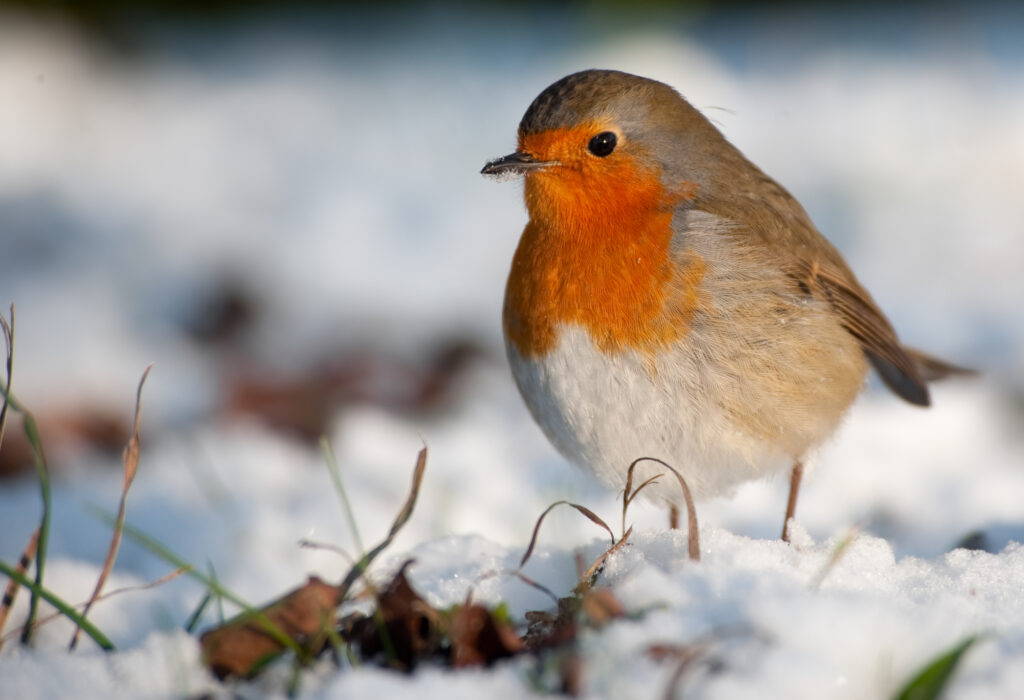
How to Attract Robins to your Garden
There are a few things you can do to encourage robins to visit your garden, try the following:
Provide the Right Food for Robins
One of the best ways to attract Robins to your garden is by providing them with food. This can be in the form of insects, earthworms, or berries. These can all be bought from pet food suppliers, large supermarkets and from online sellers. You can also put out a bird feeder filled with birdseed mix. General birdseed is ok, but you might also look out for special mixes that are known to be appealing to robins.
It’s always best to buy bird feed from a reputable supplier to make sure you’re getting quality ingredients that will help your visitors to thrive. However, there’s no need t spend a lot of money on elaborate bird tables or feeders. In another post, we looked at how to make DIY bird feeders from recycled plastic bottles – for free! In another post, we also show how to make a bird cake, which is especially good for keeping birds going through the winter.
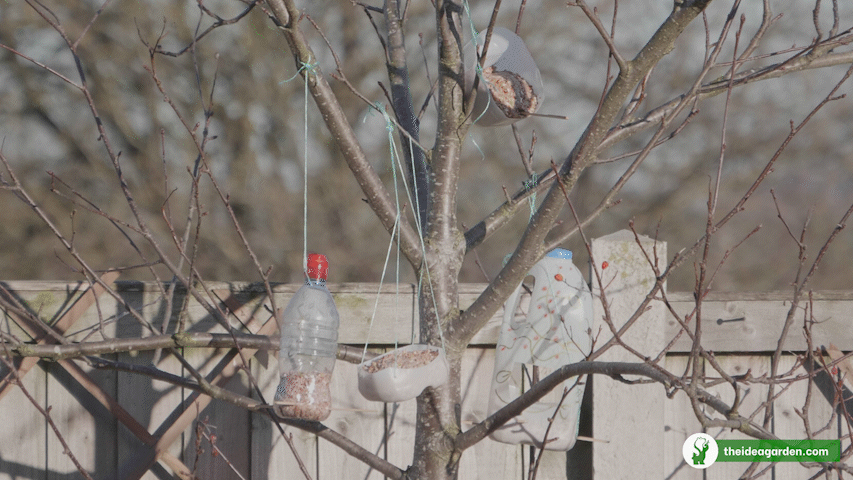
Where do you Hang a Robin Feeder?
You can hang a robin feeder from a tree, pole, or shepherd’s hook. Make sure that the feeder is at least a metre off the ground and away from any trees or shrubs. This ensures that the birds can easily get to it and avoids the threat of surprise ambushes from cats.
Create a Natural Environment for Insects
As Robins search for insects and earthworms to eat, they’ll be naturally drawn to areas where these can easily be found. Besides buying packaged insects for the bird table and feeders, you could also encourage certain insects by keeping wild areas in the garden.
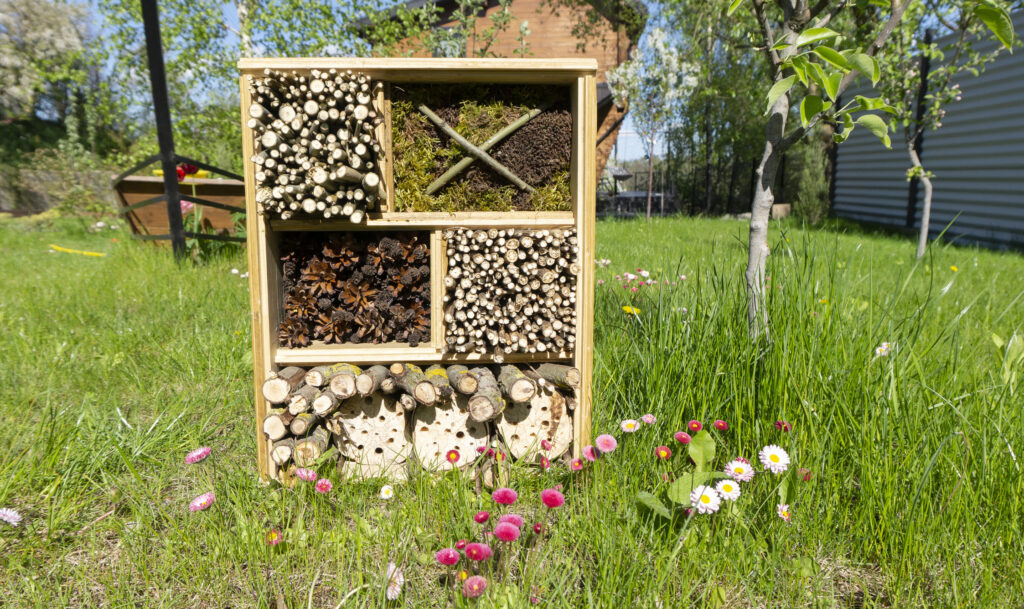
You might let the grass grow a little longer in places, or leave the odd overgrown corner or piles of undisturbed leaves. Natural features like trees and large shrubs can also help (more on that in the next section), as will things like piles of logs and stones. You could even build a bug hotel, which is basically a collection of natural materials from around the garden arranged into little ‘house’ for insects.
Make a Safe Haven – Plant Native Trees and Shrubs
Another way to attract Robins to your garden is by creating a safe haven for them. This can be done by planting dense shrubs or trees. Trees and shrubs also provide a safe haven for Robins to nest or even just rest a while and feel safe from predators.
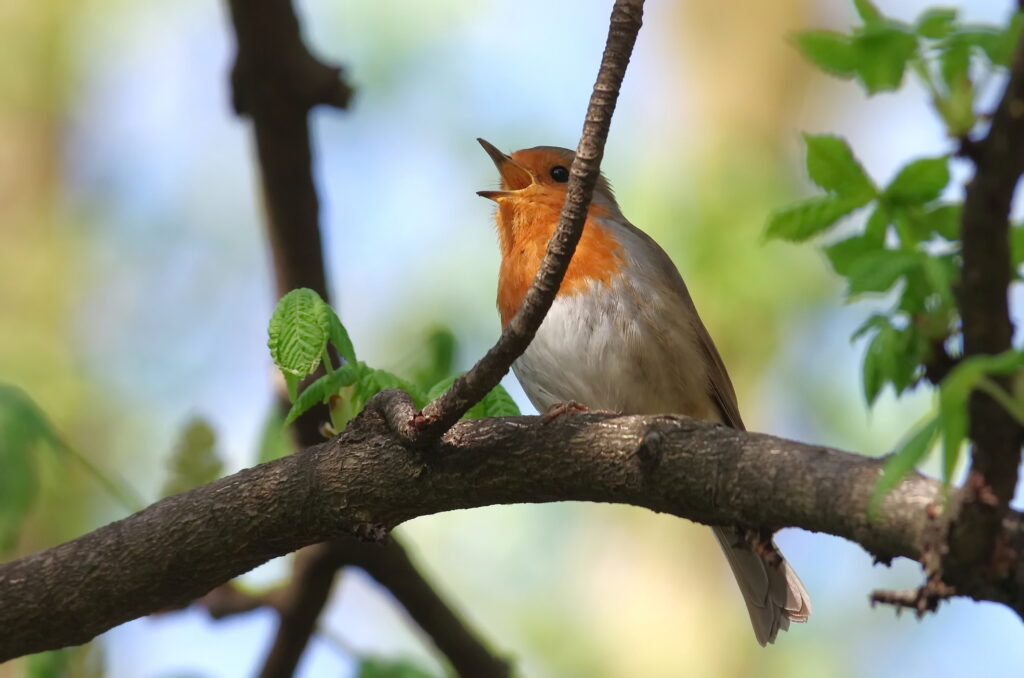
Robins are more likely to visit gardens that have native plants because these will be familiar to them and provide the insects that they like to eat. You might also plant shrubs or trees that will provide berries for robins to enjoy. You might also choose to add some evergreen planting around your garden, giving some cover and greenery even throughout the cold winter months.
Which Plants are Good for Attracting Robins?
Here are some good plant suggestions to try…
Mulberry (Morus rubra)
The mulberry tree is a good choice for robins as it provides both food and shelter. The berries are loved by robins and other birds, while the dense branches offer a safe place to nest.
Elderberry (Sambucus nigra)
Another good plant for attracting robins is the elderberry. Like the mulberry, it provides food in the form of berries as well as shelter in the form of dense branches.
Holly (Ilex aquifolium)
Holly is a classic Christmas plant, but it’s also a great choice for attracting robins to your garden. The berries are an important food source for robins, while the dense evergreen foliage offers shelter and protection.
Hawthorn (Crataegus monogyna)
Hawthorn is another good choice for attracting robins to your garden. The berries are an important food source and the prickly branches offer a safe place to nest.
Rowan (Sorbus aucuparia)
The rowan tree is another good choice for robins. The berries are an important food source and the branches offer a safe place to nest.
Crabapple (Malus sylvestris)
The crabapple tree is a good choice for robins as it provides both food and shelter. The berries are loved by robins and other birds, while the dense branches offer a safe place to nest.
Cotoneaster (Cotoneaster spp.)
Cotoneasters are good shrubs for attracting robins to your garden. The berries are an important food source and the dense foliage offers a safe place to nest.
Dog rose (Rosa canina)
The dog rose is a good choice for robins as it provides both food and shelter. The hips are loved by robins and other birds, while the dense branches offer a safe place to nest.
Blackberry (Rubus fruticosus)
Blackberries are a good choice for robins as they provide both food and shelter. The berries are loved by robins and other birds, while the prickly branches offer a safe place to nest.
Make a Water Feature or Bird Bath
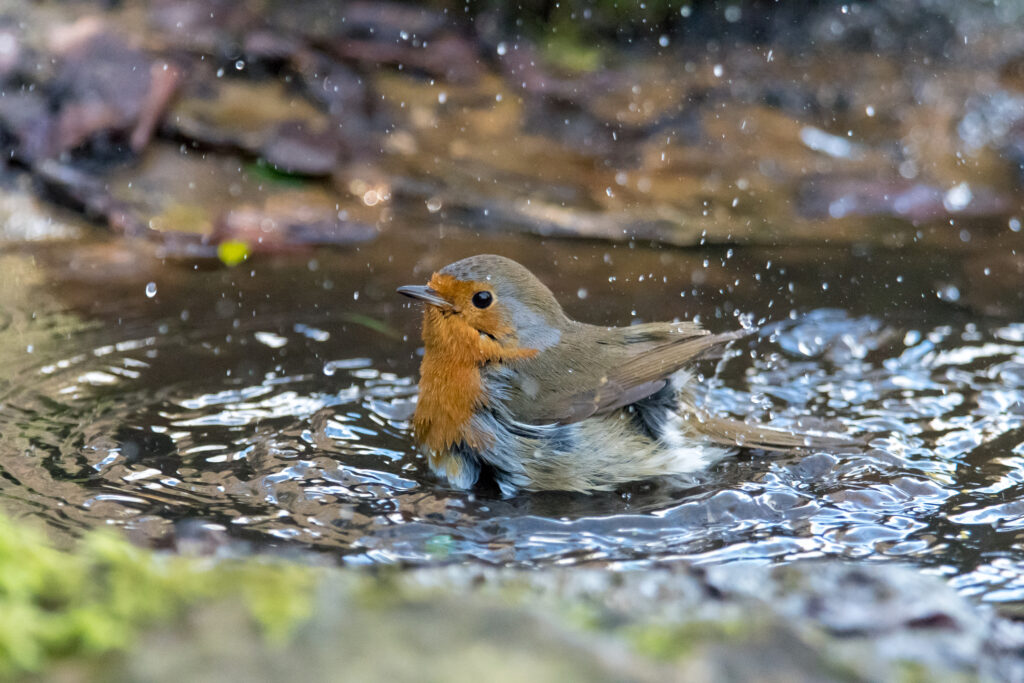
Robins love water, so having a bird bath or small pond in your garden will definitely attract them. Just make sure that the water is clean and not too deep!
You don’t have to spend a lot of money on this. It can be very cheap and easy to make your own wildlife pond – as covered in this post. Alternatively, check out this post about making your own DIY bird bath.
Provide Nesting Materials or a Nesting Box
If you want Robins to stick around, then you need to provide them with nesting materials such as twigs, leaves, and grass. You can also put up a nest box for them to use.
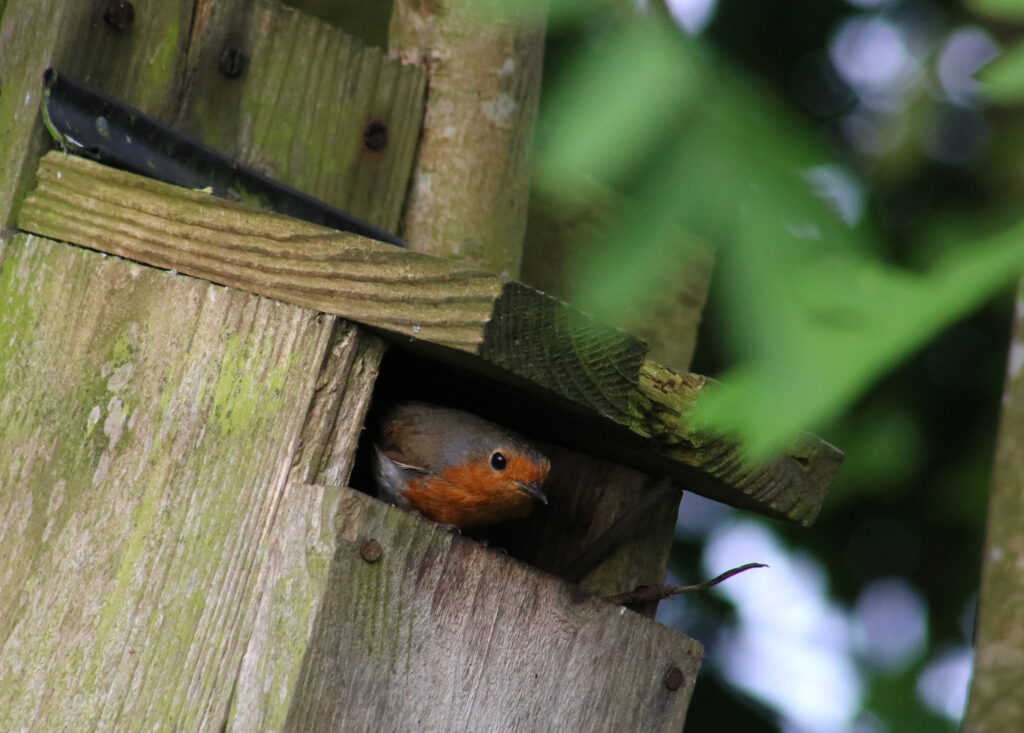
What Kind of Nesting Box Do Robins Use?
Robins will use a variety of nesting boxes, but they tend to prefer ones that are made of wood with an open front. The nest box should be placed in a sheltered spot such as under a tree or shrub. Robins will also choose nesting spots within hedges or climbing plants such as ivy.
They usually prefer nest boxes that are fairly low down – less than 2 metres from the ground, and it’s best to place the box so the entrance faces between North to East. This avoids harsh, direct sunlight and prevailing winds and rain.
When is the Best Time to Put Up a Nest Box for Robins?
The RSPB suggest that the best time to put up nest boxes is during the autumn. Throughout the autumn and winter, many birds will search through nest boxes, looking for a good spot to roost or to eat. You might even be lucky enough to see repeat visitors as some birds may also return to the same nest box the following spring.
What Time of Day is Best to See Robins?
One of the best times to see Robins is early in the morning or late in the evening as they are most active at these times. If you want to attract Robins to a particular spot in your garden, then put the food where you’ll be able to see them.
Robins can be surprisingly tame, but for the more shy and elusive visitors, you could also set up a wildlife camera of some kind. If you have a particularly large space, you could even setup a small wildlife hide in your garden. If you’d prefer to watch feathery visitors from the warmth of the house, then you might like to invest in a decent pair of binoculars.
Interesting Facts About Robins
Where do Robins Live?
The European Robin (Erithacus Rubecula) is found throughout Europe, from Scandinavia to Greece and across central Europe, including the UK. Robins are found in woods, gardens and parks and you’re most likely to see them in spring and summer.
What do Robins Look Like?
Robins are small birds with bright red breasts. The males and females look similar, but juveniles have brown upper parts and a paler breast.
Why are Robins Associated with Christmas?
The red breast of the robin is said to symbolise the blood of Jesus Christ, which was shed during his crucifixion.
Do Robins Live in Groups?
Robins are mostly solitary birds, but they will sometimes form small groups during the breeding season. After the breeding season, they will typically go their separate ways again.
What Does a Robin’s Nest Look Like?
Robins build their nests from twigs, grass, leaves, and other materials. The nest is usually cup-shaped and is built in a tree or bush.
Do Robins Eat Bread?
Bread is not a natural food for them, but they will eat it if there is nothing else available. However, it is not good for their health to eat bread all the time, so it is best to only give them small amounts of it.
What is the Lifespan of a Robin?
The average lifespan of a robin is about 2 years, but some have been known to live for as long as 11 years!
Do Robins Return to the Same Nest Every Year?
Robins will often return to the same place and even reuse the same nest year after year. However, they will also build a new nest if the old one becomes unsuitable or if it is destroyed.
What Does it Mean When a Robin Keeps Visiting Your Garden?
Some people believe that it is lucky if a robin keeps visiting your garden. It is said to symbolise good fortune and luck. On the other hand, some people see it as a sign that their loved ones are watching over them from the other side. Ultimately, it is up to the individual to decide what the meaning is for them.
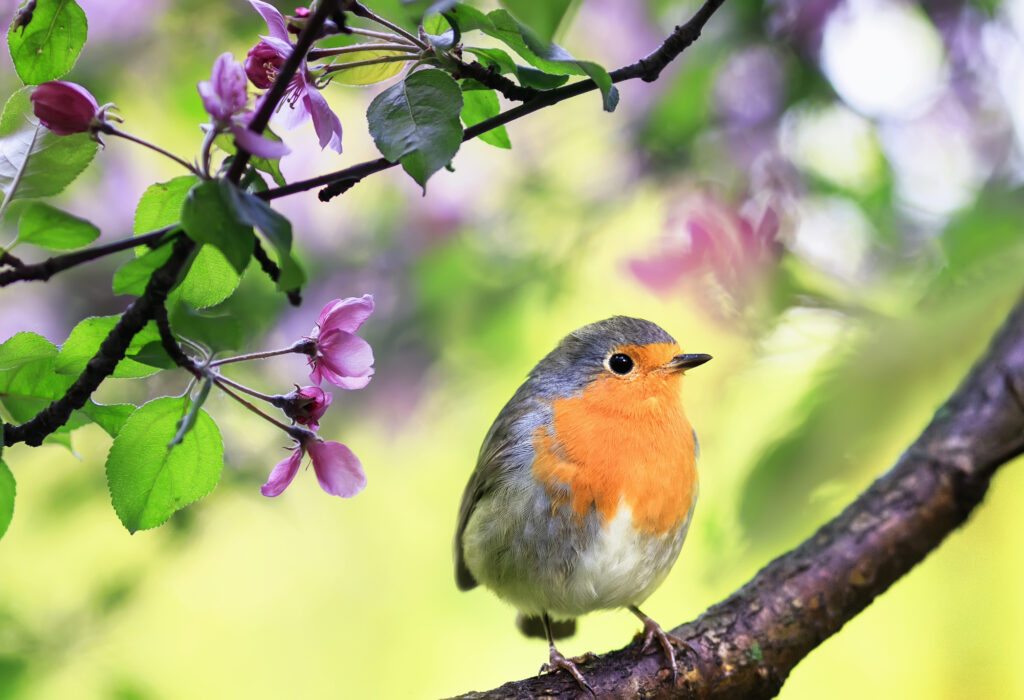
Final Thoughts
There you have it – everything you need to know about attracting robins to your garden! Remember to put up a nest box in the autumn and to provide them with food and water, and you should have no problem attracting these beautiful birds.
We’d love to hear about the Robins in your garden. What food do they go wild for? Did you put up a nest box? Tell us all about it in the comments!
